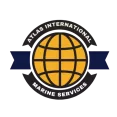How do Environmental Regulations impact the Shipping Industry?

Environmental regulations are not only shaping the shipping market but also changing the way shipping companies conduct their business.
The shipping industry has long been known for its pollution and contribution to greenhouse gas emissions.
In recent years, regulations relating to environmental concerns have increased and significantly impacted the shipping industry.
Here’s an in-depth look at how environmental regulations are shaping the shipping market.
1. The International Maritime Organization’s (IMO)
The IMO is responsible for setting standards and regulations within the shipping industry.
The IMO has set strict regulations concerning the reduction of greenhouse gas emissions in the shipping industry.
In April 2018, the IMO passed a new regulation that established a target at a minimum of 50% reduction in greenhouse gas (GHG) emissions by 2050.
This regulation’s primary aim is to keep global warming to below 2°C above pre-industrial levels and make progress towards the Paris Agreement’s 1.5°C target.
This regulation means that shipping companies will need to reduce their emissions, operating costs, and become more environmentally friendly.
2. Ballast Water Management Convention (BWM)
Ballast water refers to the water that ships use to maintain stability in the sea when carrying cargo.
The BWM convention requires ships to manage their ballast water by not releasing potentially damaging aquatic organisms into new ecosystems.
The implementation of BWM convention requires the technology of expensive ballast water treatment systems that purify the ballast water and make it suitable for disposal on the dock.
3. New Sulphur Regulations
The IMO’s new sulphur regulations took effect on January 1, 2020.
These regulations limit the maximum sulphur content of marine fuels to 0.50% m/m (mass/mass), from the previous limit of 3.5% m/m.
This regulation aims to reduce shipping’s contribution to air pollution and also contribute to lowering the greenhouse gas emissions.
This regulation means that shipping companies must adopt new technology to reduce sulphur levels, which raises their operating costs as they would need to invest in more expensive fuel.
4. Environmental Protection Area (ECA)
In order to improve air quality, the IMO uses the Environmental Protection Area (ECA) concept around the world.
The ECA specifies stricter rules governing the engines’ requirements, which helps reduce sulphur, nitrogen oxides (NOx), and particulate matter in exhaust emissions.
The stricter requirements set by the ECA means that shipping companies must upgrade their engines or adopt exhaust gas cleaning systems to meet the requirements.

5. Green Shipping Initiatives
In recent years, there has been a growing movement towards green shipping, which has further accelerated with the increase in environmental regulations.
Companies are now investing in environmentally friendly vessels, developing clean and alternative fuel sources, and using more advanced technologies to reduce emissions.
Green shipping is seen as an essential step towards reducing the environmental impact of the shipping industry.
6. Impact on Shipping Costs
Environmental regulations have a significant impact on the shipping industry’s costs.
Shipping companies are now required to invest in technologies and fuels that reduce their emissions, which increases their operating costs.
The higher costs are then passed onto the consumers, resulting in higher shipping costs and potentially impacting the global economy.
7. Impact on Shipbuilding Industry
Environmental regulations have also impacted the shipbuilding industry.
The industry must now develop ships that meet the regulations’ requirements, which requires developing new technologies and new methods of construction.
The cost of building these new vessels is higher, and shipyards must invest in new tools and technologies to meet the regulations’ requirements.
8. Impact on Small and Medium-Sized Enterprises (SMEs)
The impact of environmental regulations on small and medium-sized enterprises (SMEs) in the shipping industry is significant.
SMEs have limited resources and access to capital making investing in new technologies and fuels difficult.
As a result, SMEs may struggle to meet the regulations’ requirements and may find it challenging to remain competitive in the market.
Conclusion
Environmental regulations have significantly shaped the shipping market and changed the way shipping companies conduct their business.
Companies must now invest in technologies and develop clean fuels to reduce their emissions and meet the regulations’ requirements.
These investments have impacted the industry’s costs and the shipbuilding industry, while SMEs may struggle to meet the regulations’ requirements.
Nevertheless, environmental regulations have pushed the industry towards green shipping, which is an essential step towards reducing the environmental impact of the shipping industry.
As the world moves towards a sustainable future, it is imperative for the shipping industry to continue investing in green technologies and meet environmental regulations.
Ready to partner with a trusted and experienced provider for your marine services needs? Contact us today.
How do Environmental Regulations impact the Shipping Industry? Read More »


















